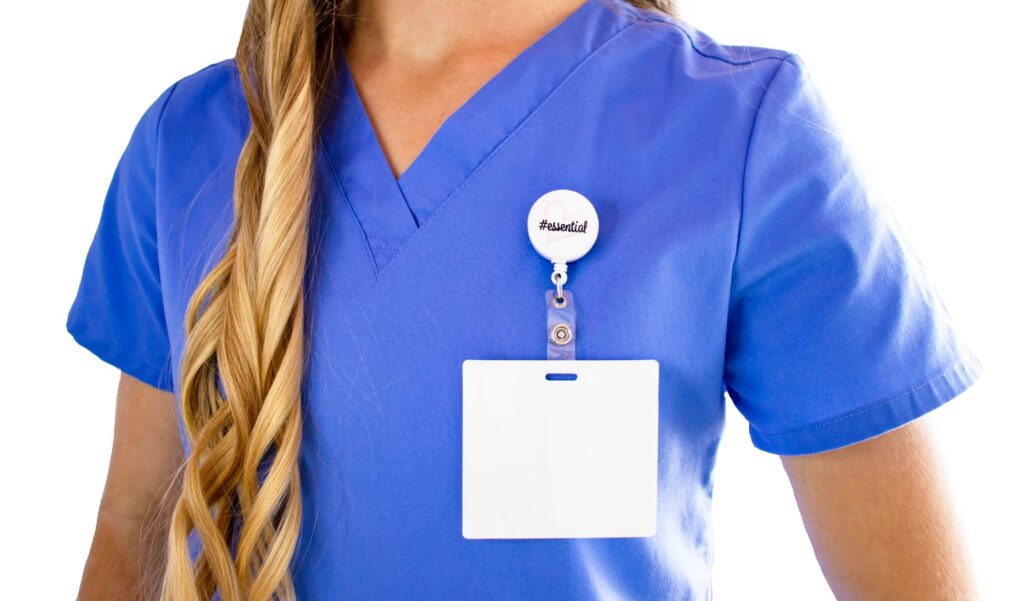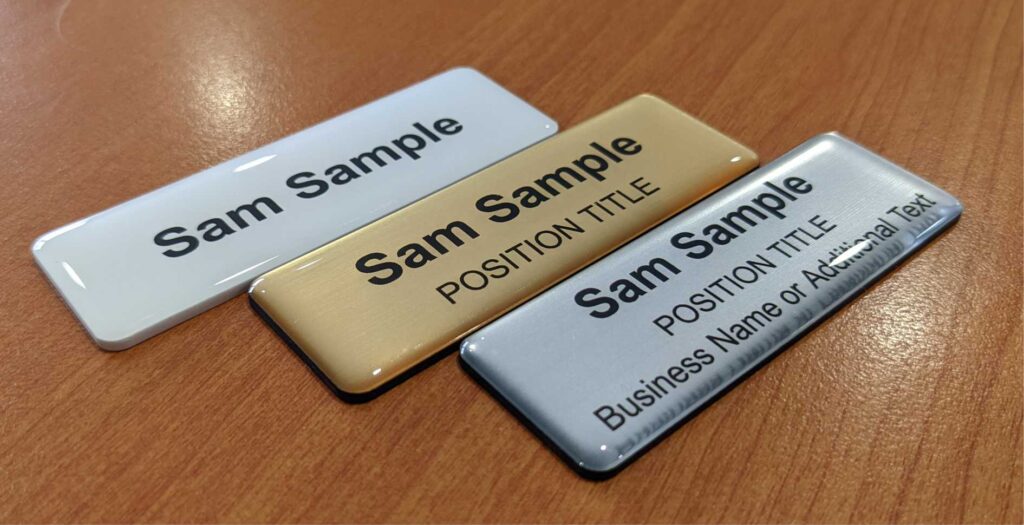As a qualified event manager, you must ensure that events run smoothly from beginning to end. This involves organizing all the events’ activities, presenters, and other forms of enjoyment as well as tasks like promoting a new event and compiling data on its participants.
Every event planner should know how to design name badges that encourage social interaction. Although it may seem like a simple commitment, a lot goes into creating a successful event badge. Numerous conferences, seminars, and events use name badges to identify attendees and encourage networking. To make successful name badges, consider the following guidelines and best design practices:
What Exactly Is A Name Badge?
Attendees wear name badges for identification, engagement, and event data intelligence. It serves as both a marketing tool for businesses and a helpful tool for interpersonal identification. Usually held within a lanyard and a plastic card holder, these are paper or card stock descriptions of the wearer. The finished item simply hangs around a participant’s neck and is essential to identification. Although badges are relatively simple, they have many components that must work together to function correctly.
What Are The Advantages Of Good Design?
It is essential to design a name badge that fits the occasion. It also acts as a helpful starting point and increases interpersonal comfort when speaking to one another. Visitors can use the information provided by these badges to initiate conversations and start networking. Finding the ideal balance and producing name badges of the highest caliber is challenging.

10 Ideas For A Name Badge Design That Works
It’s sometimes obvious how to create a name badge of excellent quality, but this analysis of the factors to consider and advice on making the best name badges you can on a budget is provided.
1. Select An Adjustable And Reliable Lanyard
The lanyard used to manufacture a name badge is one of the most critical decisions event management must make. It must always hold the tag where it can be read easily. That calls for it to be stationary and height-adjustable for users of various sizes. A double-ended lanyard is the most effective technique to prevent the rotating problem. Assess the lanyards for your event name badges and test them on multiple persons of various sizes.
2. Select An Easily Readable Font Size
One of the most significant errors that keep personalized event badges from working is the text size, which needs to be more significant. Tags that are too small discourage individuals from chatting with one another or make it more challenging. Nobody wants to struggle to read a guest’s name.
3. Choose A Font That Is Appropriate For Long Names
Some visitors will have lengthier names and wish them to appear entirely on the tag. Long words must fit comfortably on your name badge without looking disfigured. Select a font style and size that can easily accommodate lengthy names.

4. Give A Job Title
An excellent name badge provides more information than just the wearer’s initial and last name; it should also encourage social interaction. The job title is one significant piece of information. You should put a person’s work title directly under their name on the tag. This little knowledge promotes communication amongst like-minded individuals and can effectively establish new connections.
4. Think About Multicolor Badges
Although using black and white badge designs is significantly less expensive, badges supporting color are more valuable. All badge additions that include a company logo, an event description, or other designs look better when colored. By using multicolored tags, designers will have a broader range of colors, enabling them to produce unique works of art of a better caliber.
6. Ensure That QR Or Bar Codes May Be Read Through The Shields
Practical conference badges are all kept in reasonable condition by using plastic sleeves. It’s necessary to ensure that any barcodes or QR codes put on the tags can read through the plastic covers. A design or surface should constantly be tested with a smartphone or barcode reader before being chosen.

7. Choose A Sturdy Badge Material
Events frequently go on for several days before ending. The tag element of practical event badges must be vital because of this. If it needs to last several days, it is preferable to be constructed of solid vinyl. The sticker or thin vinyl tags are frequently strong enough for one-day activities. Making sure the badge material can accomplish the task you have, for it is crucial.
8. Purchase Numerous Badges
Printing the badges in quantity is another way to set a name badge at a reasonable price. Try producing as many as you can at once to get reduced costs. Consider purchasing items like plastic holders and lanyards in considerably larger quantities than you would ever need. For instance, it would be substantially more cost-effective to buy 500 holders rather than 50 when purchasing holders for a 50-person event.
Although the price may be slightly higher, there will eventually be significant savings. Avoid purchasing too few lanyards and plastic covers to go with your badges to avoid spending more money than necessary.
9. Finding The Perfect Size
When creating a name badge that will be used during occasions, a badge that is roughly 4″ by 3″ in size is perfect. When designing a badge, it is crucial to avoid making it too big or too little. People will only want to wear it if it’s manageable, or they’ll feel comfortable doing so. It won’t display enough information or show in a large enough font to be helpful if it’s too small. For the best outcomes, it’s necessary to balance these two extremes.
Try out various dimensions to see which you like most to ensure that you obtain a size you enjoy using. When choosing what to utilize, take your time and test out several options before making a final choice.

10. Employ A Talented Graphic Designer
Choosing the visuals, styles, and positioning of all the information on an event badge is more complicated than it first appears. Hiring a specialist to complete the task is the finest course of action when constructing one from scratch. They should be able to develop a unique invention that satisfies all your requirements because they will already have some ideas for making a high-quality product.
If you don’t have considerable design talents, don’t try to speed the process or perform the design yourself. To save time and ensure higher-quality results, outsource the work.
Conclusion
Event managers need to understand the name badge creation procedure. You’ll only get good feedback about the badge for your events if you create a helpful product promoting new connections. Before completing the purchase, take a little more time to decide on the various components of an event badge and put more money into the finished item.
One of the biggest mistakes you can make is to purchase inexpensive badges for your event, even if it can seem like a fantastic way to save money. You won’t save much money, and the attendees’ experience will be far worse. More money should be spent on your name badges to ensure they come out as well as possible.





